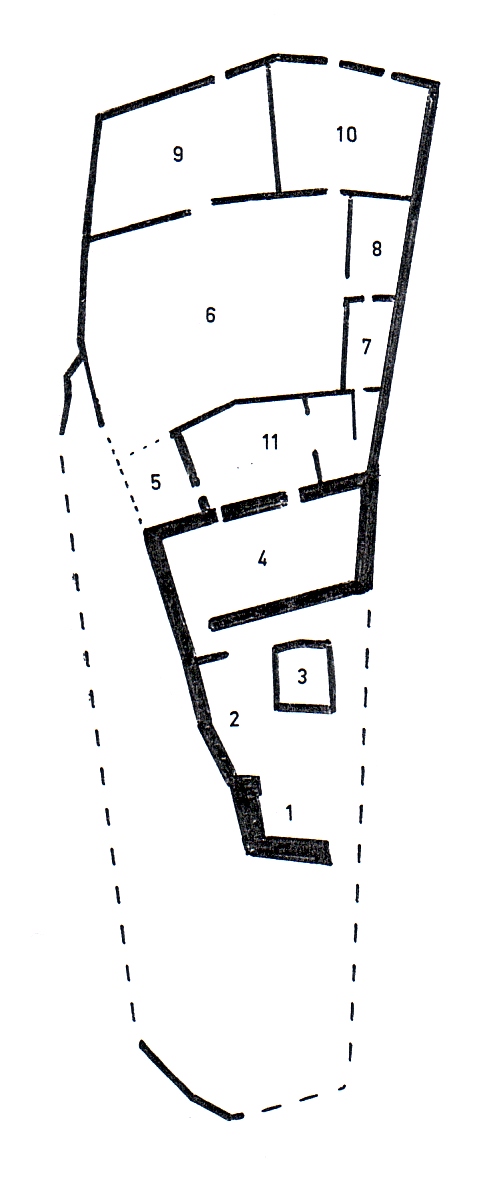|
[Texto
en espa˝ol - las imßgenes son anteriores]

Castel
Varco-Laimburg
Hoy bien visible desde la autopista del Brennero en particular
justo después de Bolzano en dirección a Trento,
resalta con sus austeras ruinas sobre el lado derecho de la
cumbre de una colina y se alcanza saliendo en la estación
de peaje de Egna-Ora y siguiendo después la indicación
Laimburg y esto está costeando inmediatamente la misma
autopista pero esta vez en dirección norte. Esta pequeña
carretera municipal, lleva a Maso Stadelhof y después
de dos curvas cerradas en rampa se llega al castillo que se
encuentra a 368m. de cota y estaba destinado al control de los
pasajes en la orilla derecha del Adige. La zona fue muy frecuentada
por los pueblos prehistóricos y en la zona de Vadena,
al norte del lago de Caldaro, ha sido hallada una necrópolis
con restos prehistóricos y romanos.
El castillo era la casa madre de los señores de Laimburg
cuya descendencia se extinguió con Kaspar en el 1488.
Heinrich de Laimburg, había obtenido el castillo en el
1269 del conde Meinhard del Tirol, pero en el cuadro por el
predominio de su territorio el príncipe obispo de Trento
EnricoIII de Metz (1310-1336) y en particular Nicoló
da Brno (1336-1347) con sus armadas, conquistó en el
1339 Chiaro/Leuchtenburg, lugar a una cota mucho más
elevada (575m.) hacia el otro lado de la garganta que les separa
y dos años después (1341) se empadronó
también de Castel Varco-Laimburg.
Para ilustrar mejor el “personaje histórico Nicoló”
es posible afirmar que Carlo di Boemia, hijo mayor de Johannes
di Lussenburgo rey de Boemia, se había establecido en
Castel Tirolo como regente en vez del hermano menor Giovanni
que en el 1330 a la edad de 9 (nueve) años se había
casado con Margareta Maultasch de 12 (doce) años condesa
del Tirol la cual a los 24 años lo repudiará porque
estaba planificado además de porque no podía tener
hijos de él y esposando a Ludovico de Wittelsbach margravio
de Branderburgo, duque de Baviera e hijo del emperador Ludovico
il Bavaro del cual nacerá Mainardo III.
Carlo de Bohemia había llevado consigo el canciller Nicoló
da Brno (2005: actual capital de Moravia en la República
checa) que en junio de 137 gracias al influyente apoyo del paisano
Johannes rey de Bohemia del cual había sido concejal
y funcionario, fue primero nombrado obispo de Trento y el 13
de junio de 1338 confirmado por el papa Benedetto XII. De esta
manera la cada de Bohemia, se aseguró la completa fidelidad
y sumisión del principado trentino. El 9 de Agosto de
1339, para recompensar al príncipe obispo por la amistad
siempre demostrada, Johannes rey de Bohemia, quiso conceder
a Nicoló da Brno y a sus sucesores de la cátedra
de San Virgilio (Trento) el escudo de San Venceslao que representa
un águila que no se puede de ninguna manera confundir
con la análoga pero distinta imagen representativa de
los condes del Tirol con los cuales sostuvieron muchos contrastes.
No los Leis de Paschbach, sino la otra
rama de la familia Leis, ambos presentes en el círculo
de Caldaro desde aproximadamente 1500, recibieron el 16 de enero
de 1591 del archiduque Fernando de Asburgo el castillo en ruinas
sobre Caldaro/Kaltern adquiriendo también el título
nobiliar y por eso fue añadido a esta rama de la familia
Leis el apelativo “de Laimburg” pero no lo hicieron
nunca reconstruir.
A continuación se cita todo lo
que está inciso en una lámina de bronce situada
en las cercanías del castillo:
En 1269 la “Laimburg” es
nombrada por primera vez en las fuentes escritas. El conde Mainardo
II de Gorizia-Tirolo en esta ocasión dio la “vest
Layenburg” a Heinrich vo Laien. Este último pertenecía
a una familia burguesa bolzanina y fue para toda su vida estrecho
confidente de los condes del Tirol. Una datación dendocronológica
de una madera de la construcción de la torre ha revelado
que el tronco usado fue derrumbado en el 1268. También
la obra de la pared constituida de piedras colocadas en capas
estrechamente horizontales, individuada sobre la torre, subraya
la edificación de esta última en la segunda mitad
del siglo XIII. Una característica posterior de esta
época es el uso de almohadillas rústicas en las
juntas de las paredes. Contemporáneamente a la torre
fue construida una pared de cerco y un edificio residencial
de más plantas. Una cisterna en el patio garantizaba
al que vivía el abastecimiento de agua. En el siglo IX
la “Laimburg” está en posesión de
los señores “von Rottenburger”, residentes
en Caldaro. Esta familia noble es muy influyente, a menudo está
implicada en conflictos de guerra que determinan también
el destino de la “Laimburg”. Así el castillo
fue conquistado y destruido por el obispo Nicola de Trento en
los años 1339 y 1341 después de que la familia
de los “Rottenburger” obtuvo de nuevo su propiedad,
y ensanchó el castillo todavía durante el siglo
XIV. En aquella ocasión fue construido un amplio edificio,
que determina la instalación de ahora en adelante hacia
el este. En consecuencia se formó un nuevo patio entre
la vieja y la nueva construcción. El castillo alcanzó
de esta forma su extensión actual. En el 1410 los señores
de “Rottemburg” perdieron la “Laimburg”
definitivamente después de un enésimo conflicto.
El nuevo propietario, el duque Federico IV (Tascavuota 1406-1439)
encomendó el cuidado del castillo al guardián
“Wilhelm von Waltenhofen” en el 1424. Fueron estos
a volver a dar a la Laimburg el estado de habitaciones pero
ya a partir del final del siglo XV el castillo fue dejado al
decaimiento.
Desde 199 al 2001 ha acontecido la salvaguardia
y la conservación de la ruina trámite el centro
de Experimentación Laimburg en colaboración con
la oficina para los bienes culturales de la provincia autónoma
de Bolzano.
1 MASTIO - MASTIO
2 CORTE - CORTE
3 CISTERNA - CISTERNA
4 PALAZZO - PALACIO
5 CAPPELLA - CAPILLA
6 CORTE - CORTE
7 EDIFICIO AGRICOLO - EDIFICIO AGRICOLA
8 EDIFICIO AGRICOLO - EDIFICIO AGRICOLA
9 EDIFICIO ABITATIVO / AGRICOLO - EDIFICIO HABITABLE / AGRICOLA
10 EDIFICIO ABITATIVO / AGRICOLO - EDIFICIO HABITABLE / AGRICOLA
11 ???

[Texte
en franšais - les images sont au-dessus]
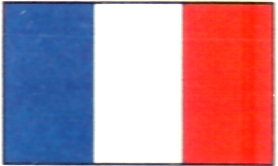
Château
Varco-Laimburg
Aujourd’hui bien visible de l’autoroute du Brenner,
en particulier après Bolzano en direction de Trente,
il se détache avec ses ruines austères sur le
côté droit au sommet d’une colline et est
accessible en sortant au panneau Egna-Ora et en suivant l’indication
Laimburg, c’est-à-dire en longeant immédiatement
l’autoroute-même mais cette fois en direction du
nord. Cette petite route communale porte à Maso Stadelhof
et après deux raides tournants, rejoint le château
qui se trouve à 368 mètres d’altitude et
était destiné au contrôle des passagers
sur la berge droite de l’Adige. La zone était très
fréquentée, par des populations préhistoriques
et dans la zone de Vadena, au nord du lac de Caldaro, a été
découverte une nécropole avec des restes préhistoriques
et romains.
Le château était la maison-mère des seigneurs
de Laimburg, laquelle maison s’éteignit avec Kaspar
en 1488. Heinrich de Laimburg avait obtenu le château
en 1269 du comte Meinhard du Tyrol, mais dans le cadre de la
suprématie sur le territoire le prince évêque
de Trente, Henri III de Metz (1310-1336) et en particulier Nicolas
de Brno (1336-1347) avec ses armées, conquit en 1339
château Chiaro/ Leuchtenburg, situé à une
altitude plus élevée (575m) sur l’autre
côté de la gorge qui les divise, et deux ans plus
tard (1341) il s’empara également du château
Varco-Laimburg.
Pour mieux illustrer le “personnage historique Nicolas”
il est possible d’affirmer que Charles de Bohême,
fils aîné de Jean de Luxembourg, roi de Bohême,
s’était installé au château Tyrol
comme régent à la place de son frère mineur,
Jean qui en 1330, à l’âge de neuf ans avait
épousé Margareta Maultasch de douze ans, comtesse
du Tyrol, laquelle à l’âge de 24 ans le répudiera
pour ne pouvoir lui donner d’enfant et épousa Ludovic
de Wittelsbach, margrave de Brandebourg, duc de Bavière
et fils de l’empereur Ludovic le Bavaro duquel naîtra
Mainardo III.
Charles de Bohême avait porté avec lui le chancelier
Nicolas de Brno (2005 : actuelle capitale de la Moravie en République
Tchèque) qui en juin 1337 grâce à l’influent
appui du compatriote Johannes, roi de Bohême, duquel il
était conseiller et fonctionnaire, fut d’abord
nommé évêque de Trente et le 13 juin 1338
confirmé du pape Benoît XII. De cette manière
la maison de Bohême s’assura la complète
fidélité et soumission du principat trentin. Le
9 août 1339, pour récompenser le prince évêque
de l’amitié toujours démontrée, Johannes
roi de Bohême, voulait concéder à Nicolas
de Brno et à ses successeurs sur la chair de San Virgilio
(Trente) le blason de San Venceslao qui représente un
aigle qui n’est absolument pas à confondre avec
l’analogue mais diverse image représentative des
comtes de Tyrol avec lesquels s’élevèrent
de nombreux litiges.
Ce ne sont pas les Leis de Paschbach,
mais l’autre branche de la famille Leis, tous deux présents
dans les environs de Caldaro depuis 1500 environ, qui reçut
le 16 janvier 1591 de l’archiduc Ferdinand de Habsbourg
le château en ruine situé au-dessus de Caldaro/Kaltern,
acquérant ainsi également le titre nobiliaire
et c’est pour cela que fut ajouté à cette
branche de la famille Leis l’appellation “de Laimburg”,
mais ceux-ci ne le firent jamais reconstruire.
Par la suite on se référa
à l’inscription d’une plaque de bronze située
dans les annexes du château :
En 1629 la “Laimburg” est citée pour la première
fois dans des sources écrites. Le comte Mainardo II de
Gorizia-Tirolo en cette occasion donna la “vest Layenburg”
à Heinrich von Laien. Ce dernier appartenait à
une famille bourgeoise de Bolzano et fut pour toute sa vie un
intime confident des comtes du Tyrol. Un datation dendrochronologique
du bois de construction de la tour a révélé
que le tronc utilisé fut abattu en 1268. L’appareil
mural, constitué de pierres organisées en strates
horizontales, individualisé sur la tour, souligne l’édification
de celle-ci dans la seconde moitié du XIIIe siècle.
Une ultérieure caractéristique de cette époque
est l’utilisation de bossages rustiques le long des joints
des parois. En même temps que la tour, furent construits
un mur d’enceinte et un édifice résidentiel
de plusieurs étages. Une citerne dans le cour garantissait,
à qui y habitait, l’approvisionnement en eau. Au
XIVe siècle la “Laimburg” était en
possession des seigneurs “von Rottenburg”, résidents
à Caldaro. Cette noble famille, très influente,
était souvent impliquée dans des conflits guerriers
qui déterminaient aussi le destin de la “Laimburg”.
De cette façon l’évêque Nicolas de
Trente, dans les années 1339 à 1341, conquit et
détruisit le château; après quoi la famille
des “Rottenburger” en obtint à nouveau la
propriété, encore au XIVe siècle, elle
élargit le château. En cette occasion il fit construire
un ample édifice, qui détermina le plan actuel
vers l’est. En conséquence on forma une nouvelle
cour entre l’ancienne et la nouvelle construction. Le
château atteignit de cette manière son extension
maximale. En 1410 les seigneurs de “Rottenburg”
perdirent définitivement la “Laimburg” après
un énième conflit. Le nouveau propriétaire,
le duc Frédéric IV (poche vide 1406-1439) confia
le soin du château à son serviteur “Wilhelm
von Waltenhofen” en 1424. Ce sont eux qui donnèrent
à nouveau à la “Laimburg” l’état
d’habitation mais déjà à partir de
la fin du XVe siècle le château fut laissé
a l’abandon.
De 1999 à 2001 furent entreprises des opérations
de sauvegarde et de conservation des ruines grâce au centre
d’expérimentation Laimburg en collaboration avec
l’office pour les biens culturels de la province autonome
de Bolzano.
1 MASTIO - DONJON
2 CORTE - COUR
3 CISTERNA - CITERNE
4 PALAZZO - PALAIS
5 CAPPELLA - CHAPEL
6 CORTE - COUR
7 EDIFICIO AGRICOLO - EDIFICE AGRICOLE
8 EDIFICIO AGRICOLO - EDIFICE AGRICOLE
9 EDIFICIO ABITATIVO e AGRICOLO - EDIFICE HABITABLE et AGRICOLE
10 EDIFICIO ABITATIVO e AGRICOLO - EDIFICE HABITABLE et AGRICOLE
11 ???

[Text
auf Deutsch - die Bilder sind oben]
 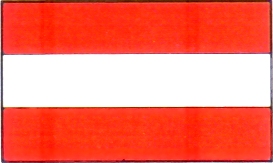
Schloß Varco-Laimburg
Sehr sichtbar von der Autobahn vom Brennero insbesondere gleich
nach Bolzano Richtung Trient ragt es mit den Ruinen auf der
rechte Seite auf dem Gipfel eines Hügels heraus. Um das
Schloß zu erreichen, fährt man Richtung Schloß
Egna-Ora aus und dann nach der Beschilderung Laimburg Richtung
norden, fast der Autobahn entlang. Diese kleine Landstraße
führt nach zwei steilen Kurven zur Burg, die um 368 m ist,
um am besten die Zoll-Kontrolle am Etsch ab Mittelalter zu üben.
Das Gebiet war auch in Prähistorie bewohnt, bzw. in Vadena,
nördlich vom KalterSee, ist eine Nekropole mit prähistorischen
und römischen Reste gefunden worden.
Die Burg gehörte den Herren von Laimburg, wessen Nachkommen
mit Kaspar 1488 auslöschte. Heinrich von Laimburg erhielt
die Burg 1269 vom Grafen Meinhard vom Tirol, aber das Gebiet
wurde später vom Prinz-Bischof von Trient Heinrich III
von Metz (1310-1336) und danach von Nikolaus; aus Brno (1336-1347)
erobert, als sie 1339 Schloß Chiaro/Leuchtenburg, das
höher auf der anderer Seite des Tales liegt (575m), und
zwei Jahre später (1341) auch Schloß Varco-Laimburg
ihnen gehörten.
Karl von Böhmen, älteste Sohn von Johannes aus Luxembourg,
König von Böhmen, lebte in Schloß Tirol als
Regent des 9 Jährigen Bruders Johann, der 1330 die Gräfin
von Tirol Margarethe Maultasch (12 Jahre alt) heiratete. Sie
lehnt ihn mit 24 ab, weil sie keine Kinder von ihm haben könnte,
und heiratet Markgraf von Brandenburg Ludwig von Wittelsbach,
Herzog von Bayern und Sohn des Kaisers Ludwig der Bayrische;
Mainhard III wurde geboren.
Der Kanzler Nicolo' aus Brno (2005: aktuelle Hauptstadt von
Moravien in der tschechischen Republik) hatte Karl von Böhmen
begleitet; er wurde im Juni 1337 zuerst Bischof von Trient danke
des einflußreichen Hilfes Johannes König von Böhmen,
von dem er Ratsherr und Beamter gewesen war, und 13.06.1338
offizeill vom Paps Benedetto XII bestńtigt wurde. Böhmen
war deshalb mit Fürstentum-Trient gebunden. Am 09.08.1339
belohnte Johannes König von Böhmen den immer treuen
Prinz-Bischof Nikolaus und seinen Nachfolgern in der Regierung
von Hlg. Vergils Gebiet (Trento) mit dem der Schild von Hlg.
Venceslao, das einen Adler darstellt;
man lies sich aber nicht mit dem Ähnlichen von Grafen von
Tirol, die später in Kontrast zu ihnen kamen.
Nicht die Leis von Paschbach, sondern der andere Teil der Familie
Leis, beide gegenwärtig im Kreis von Caldaro gegen 1500,
bekamen 16.01.1591 di Ruinen über Kaltern von Erzherzog
Fernand von Hasburg, um den adligen Titel zu bekommen; deshalb
wurden sie Leis "von Laimburg"; die Burg ließen
sie aber nie aufbauen.
Es folgt, was auf Bronze in der Nähe von der Burg steht:
1269 wird “Laimburg” zum ersten Mal in den geschriebenen
Quellen genannt. Bei dieser Gelegenheit gab Graf Mainhard II
von Gorizia-Tirol Heinrich von
Laien die “Festung Layenburg” . Dieser stammte aus
einer familie der Bourgeoise aus Bozen, und war da ganze Leben
ein sehr nahe Vertraute von den Grafen von Tirol. Eine dendrologische
Datierung vom Holz im Hauptturm behauptet, daß der gebrauchte
Stamm 1268 fńllen wurde. Die Mauer von Steinen, die in waagerechte
Schichten sind, wie die vom Turm, ist Zeichen von de Bauweise
in der zweiten Hälfte des XIII Jahrhunderts. Eine spätere
Eigenschaft dieser Zeit ist die Verwendung von Bossenwerk in
den Mauerverbńnden. Gleichzeitig wurde auch einen Mauerring
und ein Wohngebäude mit mehreren Stockwerken gebaut. Eine
Zisterne im Hof garantierte die Versorgung von Wasser. Im IX
Jahrhundert geh÷rte die Festung “Laimburg” den Herren
“von Rottenburger”, die in Kaltern wohnten. Diese
adlige Familie ist sehr einflußreich, oft nimmt an Konflikten
und Kriege teil; deshalb wird die Festung “Laimburg.”
zerst÷rt. Die Burg wurde vom Bischof Nikolaus von Trient 1339
und 1341 nach der Zerstörung, aber die “Rottenburger”
erhielten sie wieder, und vergrößerte die Burg während
des XIV Jahrhunderts. Ein breiteres Gebäude wurde gebaut,
und die Burg bekommt di Form zum Osten. Als Nachfolge konnte
man einen neuen Hof zwischen dem alten und neuem Bau. Die Burg
erreichte schon damals seine aktuelle Größe. 1410
verloren die Herren von “Rottemburg” die Burg “Laimburg”
definitiv nach einem unter unzńhligen Konflikt. Der neue Eigentümer,
Herzog Frederich IV (Leeretasche genannt; 1406-1439) lies 1424
die Burg zum Hüter “Wilhelm von Waltenhofen”
. Er lies die Festung nochmal bauen, aber schon Ende des XV
Jahrhunderts wurde die Burg verlassen.
Von 1999 bis 2001 ist der Schutz und die Erhaltung der Ruine
dank des Zentrums von Forschung Řber Laimburg in Zusammenarbeit
mit dem Büro für die kulturellen Güter von der
unabhńngigen Stadt von Bolzano.
1. WEHRTURM
2. BURGHOF
3. ZISTERNE
4. PALAST
5. KAPELLE
6. BURGHOF
7. WIRTSCHAFT GEBÄUDE
8. WIRTSCHAFT GEBÄUDE
9. WOHN UND WIRTSCHAFT GEBÄUDE
10. WOHN UND WIRTSCHAFT GEBÄUDE
11. ???

[Text
in English - the images are above]
 
Castel Varco-Laimburg
Today the castle is easily visible from the freeway in Brennero, in particular right after Bolzano in the direc-tion of Trento. It stands out on the right side on the top of a hill with its austere ruins, and it is reachable exit-ing at the toll booth of Egna-Ora and then following the signs for Laimburg-that is, skirting the freeway itself but this time going toward the north. This small communal road leads to Maso Stadelhof and, after two steep switchbacks, to the castle. The castle itself sits at an altitude of 368 meters and was originally designed to control the passageways along the right bank of the Adige River. This zone was populated by prehistoric peoples, and in the area of Vadena, north of Caldaro Lake, a necropolis was found with prehistoric and Ro-man remains.
The castle was the headquarters of the lords of Laimburg, whose lineage ended with Kaspar in 1488. Heinrich of Laimburg obtained it castle in 1269 from Count Meinhard of Tyrol. In the greater picture of control over the territory, in 1339 the prince-bishop of Trento, Enrico III of Metz (1310-1336), and in particular the army of Nicol˛ da (of) Brno (1336-1347) conquered the Castel Leuchtenburg (Shining Castle). This castle is placed at a much greater altitude (575 meters) on the other side of the gorge that divides the castles. Two years later (1341), Enrico III also assumed control of Castel Varco-Laimburg.
Some background information will better illustrate the "historic figure of Nicol˛." One can affirm that Karl IV of Bohemia, eldest son of Jan of Luxembourg, King of Bohemia, was installed at Castle Tyrol as regent in place of younger brother Giovanni. In 1330 Giovanni, at the age of nine, had married Margareta Maultasch, 12 years old, Countess of Tyrol. At the age of 24 Maultasch rejected her husband due to her being ordered not to have children by him, and married instead Ludovico of Wittelsbach, the Margrave of Brandenburg, Duke of Bavaria, and son of Emperor Ludovico IV the Bavarian, from whom Maynard III was born.
Karl IV of Bohemia had brought with him the chancellor Nicol˛ da Brno (as of 2005, the capital of Moravia in the Czech Republic). In June of 1337, thanks to the influential support of countryman (and king) Jan, to which he was adviser and functionary, Nicol˛ was nominated bishop of Trento to be confirmed by Pope Benedict XII on June 13, 1338. In this way the house of Bohemia assured itself of the complete loyalty and submission of the princedom of Trento. On August 9, 1339, to repay the bishop-prince for the friendship he had always shown, King Jan granted to Nicol˛ da Brno and his successors at the Cathedral of St. Virgil (Trento) the coat of arms of San Venceslao, which depicted an eagle. (This is not to be confused with the analogous but different image representing the counts of Tyrol, with which many differences arise.)
Not the Leis of Paschbach, but the other branch of the Leis family-both present in the area of Cal-daro from about 1500-on January 16, 1591, received from Archduke Ferdinand of Habsburg the cas-tle in ruins set above Caldaro/Kaltern. They acquired also the title of nobility, and thus the appella-tion "of Laimburg" was added to this branch of the Leis family. They would never reconstruct the castle.
Below is the account of the inscription on a bronze plate placed in the surroundings of the castle:
In 1269 "Laimburg" was named for the first time in written sources. On that occasion, Count Maynard II of Gorizia-Tyrol gave the "vest Layenburg" to Heinrich von Laien. The latter pertained to a bourgeois family from Bolzano and was for all his life the close confidant of the counts of Tyrol. A piece of wood used in con-struction of the tower was dated using tree-dating techniques, which revealed that the trunk used was felled in 1268. The wallwork identified on the tower, constituted of stones organized in strictly horizontal rows, also underlines its construction in the second half of the thirteenth century. Another characteristic of this era was the use of rustic stonework along the meeting point of the walls. A boundary wall and multi-floor residence were constructed contemporaneously with the tower. A cistern in the courtyard guaranteed the inhabitants a water supply. In the fourteenth century the "Laimburg" Castle was in possession of the lords von Rottenburg, residents of Caldaro. This noble family was very influential, often involved in conflicts of war that would also determine the fate of the Laimburgs. The castle was conquered and destroyed by Bishop Nicola of Trento in the years 1339 and 1341, after which the Rottenburgers once more obtained the property and enlarged the castle again during the fourteenth century. On that occasion they constructed an ample structure that would direct future building plans toward the east. By consequence a new courtyard formed between the old and new construction, and in this manner the castle reached its present-day extension. In 1410 the Rottenburg lords definitively lost Laimburg following another of their numerous conflicts. The new owner Duke Frederick IV (Frederick of the Empty Pockets, 1406-1439) entrusted the care of the castle to the custodian Wilhelm von Waltenhofen in 1424. This move led once more to Laimburg being inhabited, but already by the end of the fifteenth century the castle was left to decay.
From 1999 to 2001 the salvation and conservation of the ruins was taken up by the "Centro di Sperimentazi-one" (Center of Experimentation) of Laimburg in collaboration with the Office of Cultural Heritage of the autonomous province of Bolzano.
1 MAIN TOWER - WEHRTURM
2 COURTYARD - BURGHOF
3 CISTERN - ZISTERNE
4 PALACE - PALAS
5 CHAPEL - KAPELLE
6 COURTYARD - BURGHOF
7 AGRICULTURAL BUILDING - WIRTSCHAFT GEBAUDE
8 AGRICULTURAL BUILDING - WIRTSCHAFT GEBAUDE
9 HOUSING / AGRICULTURE - WOHN UND WIRTSCHAFT GEBAUDE
10 HOUSING / AGRICULTURE - WOHN UND WIRTSCHAFT GEBAUDE
11 ???

|
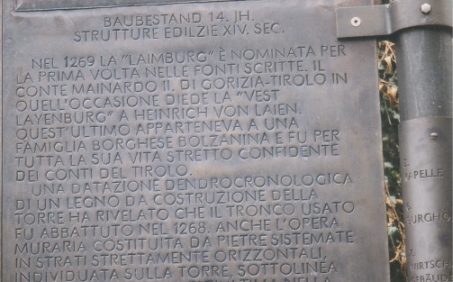
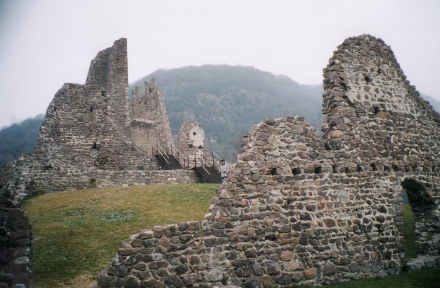 Nel
XIV secolo la "Laimburg" Ŕ in possesso dei signori "von Rottenburg",
residenti a Caldaro. Questa famiglia nobile e molto influente, spesso
Ŕ coinvolta in conflitti guerreschi che determinano anche il destino
della " Laimburg " . Cosý
il castello fu conquistato e distrutto dal vescovo Nicola di Trento
negli anni 1339 e 1341 dopodichŔ la famiglia dei "Rottenburger" ottenne
di nuovo la sua proprietÓ, e allarg˛ il castello ancora durante il
XIV secolo. In quell'occasione fu costruito un ampio edificio, che
determina l'impianto d'ora in poi verso l'est. Di conseguenza si form˛
un nuovo cortile tra la vecchia e la nuova costruzione. Il
castello giunse in questa maniera alla sua estensione odierna. Nel
1410 i signori di "Rottenburg"persero la "Laimburg" definitivamente
in seguito a un ennesimo conflitto. Il nuovo proprietario, il duca
Federico IV (Tascavuota 1406-1439) affid˛ la cura del castello al
custode "Wilhelm von Waltenhofen" nel 1424. Fu
questi a ridare alla Laimburg lo stato di abitazione ma giÓ a partire
dalla fine del XV secolo il castello fu lasciato al decadimento. Dal
1999 al 2001 Ŕ avvenuta la salvaguardia e la conservazione della rovina
tramite il centro di sperimentazione Laimburg in collaborazione con
l'ufficio per i beni culturali della provincia autonoma di Bolzano.
Nel
XIV secolo la "Laimburg" Ŕ in possesso dei signori "von Rottenburg",
residenti a Caldaro. Questa famiglia nobile e molto influente, spesso
Ŕ coinvolta in conflitti guerreschi che determinano anche il destino
della " Laimburg " . Cosý
il castello fu conquistato e distrutto dal vescovo Nicola di Trento
negli anni 1339 e 1341 dopodichŔ la famiglia dei "Rottenburger" ottenne
di nuovo la sua proprietÓ, e allarg˛ il castello ancora durante il
XIV secolo. In quell'occasione fu costruito un ampio edificio, che
determina l'impianto d'ora in poi verso l'est. Di conseguenza si form˛
un nuovo cortile tra la vecchia e la nuova costruzione. Il
castello giunse in questa maniera alla sua estensione odierna. Nel
1410 i signori di "Rottenburg"persero la "Laimburg" definitivamente
in seguito a un ennesimo conflitto. Il nuovo proprietario, il duca
Federico IV (Tascavuota 1406-1439) affid˛ la cura del castello al
custode "Wilhelm von Waltenhofen" nel 1424. Fu
questi a ridare alla Laimburg lo stato di abitazione ma giÓ a partire
dalla fine del XV secolo il castello fu lasciato al decadimento. Dal
1999 al 2001 Ŕ avvenuta la salvaguardia e la conservazione della rovina
tramite il centro di sperimentazione Laimburg in collaborazione con
l'ufficio per i beni culturali della provincia autonoma di Bolzano.

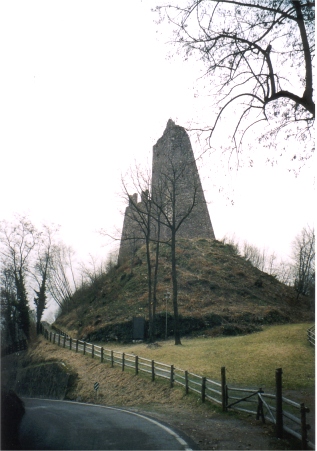 Oggi
ben visibile dall'autostrada del Brennero in particolare subito dopo
Bolzano in direzione Trento, si
staglia con le sue austere rovine sul lato destro al culmine di una
collina ed Ŕ raggiungibile uscendo al casello di Egna-Ora e seguendo
poi l'indicazione Laimburg e cioŔ costeggiando immediatamente
l'autostrada stessa ma questa volta in direzione nord. Questa
piccola strada comunale, porta a Maso Stadelhof e dopo due ripidi
tornanti raggiunge il castello che si trova a 368 m. di quota ed era
destinato al controllo dei passaggi sulla sponda destra dell'Adige.
La zona fu molto frequentata da popolazioni preistoriche e nell'area
di Vadena, a nord del lago di Caldaro, Ŕ stata rinvenuta una necropoli
con resti preistorici e romani.
Oggi
ben visibile dall'autostrada del Brennero in particolare subito dopo
Bolzano in direzione Trento, si
staglia con le sue austere rovine sul lato destro al culmine di una
collina ed Ŕ raggiungibile uscendo al casello di Egna-Ora e seguendo
poi l'indicazione Laimburg e cioŔ costeggiando immediatamente
l'autostrada stessa ma questa volta in direzione nord. Questa
piccola strada comunale, porta a Maso Stadelhof e dopo due ripidi
tornanti raggiunge il castello che si trova a 368 m. di quota ed era
destinato al controllo dei passaggi sulla sponda destra dell'Adige.
La zona fu molto frequentata da popolazioni preistoriche e nell'area
di Vadena, a nord del lago di Caldaro, Ŕ stata rinvenuta una necropoli
con resti preistorici e romani. 